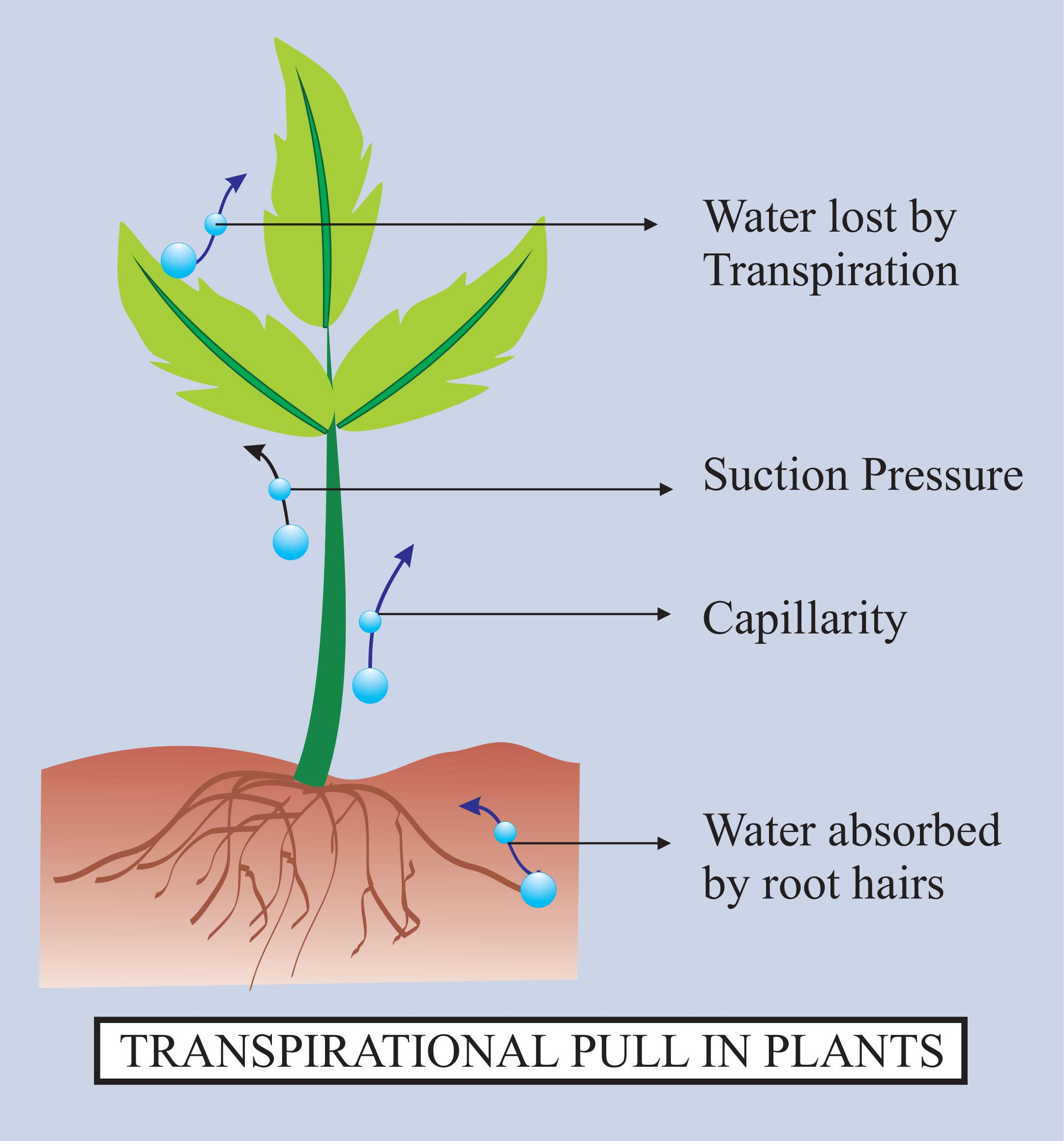
Maximum transpiration takes place from
(a)Stem
(b)Leaves
(c)Roots
(d)Flowers and fruits
Answer
487.8k+ views
Hint: Transpiration takes place from the small apertures of the aerial plant part. Negative pressure is created by transpiration and hence an afterward pool is created which helps in further movement of minerals in the water.
Complete answer:
As you may know that the phenomenon of transpiration is the ascent of SAP containing water and minerals from the roots to the leaves and later released to the atmosphere. Transpiration which occurs through the stomatal aperture of the leaf creates a high amount of negative pressure which ultimately results in a suction or a vacuum. Many parts of the plant body do take part in the transpiration process but the stomatal aperture of the leaf is the place where most of the transpiration takes place as it is in direct contact with the atmosphere and are the extremities of the plant body. Due to this high amount of negative pressure, the ascent of SAP can occur.
Additional Information: -Stomatal apertures are shut during the night time and the translation process is also interrupted.
-The leaves come in direct contact with the sunlight and the atmosphere and hence there is a large amount of transpiration that takes place from the leaves to the atmosphere and also it is the place where most of the negative pressure is created from.
-Transpiration process also maintains the balance between Oxygen and carbon dioxide present in the atmosphere and is an essential process for the continuation of life on earth.
-Transpiration pull can also increase much fold for the plants which have higher height than normal plants.
So, the correct option is, “Leaves”.

Note: -You must note that transpiration may occur from other parts of the plant body but they are maximum and leaves.
-You must also note that the maintenance of the water cycle is also done by the translation process. The plants also play a major role in the formation of clouds and precipitation
-The transpiration rate may also vary depending upon the relative humidity outside the planning body.
Complete answer:
As you may know that the phenomenon of transpiration is the ascent of SAP containing water and minerals from the roots to the leaves and later released to the atmosphere. Transpiration which occurs through the stomatal aperture of the leaf creates a high amount of negative pressure which ultimately results in a suction or a vacuum. Many parts of the plant body do take part in the transpiration process but the stomatal aperture of the leaf is the place where most of the transpiration takes place as it is in direct contact with the atmosphere and are the extremities of the plant body. Due to this high amount of negative pressure, the ascent of SAP can occur.
Additional Information: -Stomatal apertures are shut during the night time and the translation process is also interrupted.
-The leaves come in direct contact with the sunlight and the atmosphere and hence there is a large amount of transpiration that takes place from the leaves to the atmosphere and also it is the place where most of the negative pressure is created from.
-Transpiration process also maintains the balance between Oxygen and carbon dioxide present in the atmosphere and is an essential process for the continuation of life on earth.
-Transpiration pull can also increase much fold for the plants which have higher height than normal plants.
So, the correct option is, “Leaves”.

Note: -You must note that transpiration may occur from other parts of the plant body but they are maximum and leaves.
-You must also note that the maintenance of the water cycle is also done by the translation process. The plants also play a major role in the formation of clouds and precipitation
-The transpiration rate may also vary depending upon the relative humidity outside the planning body.
Recently Updated Pages
Master Class 11 Economics: Engaging Questions & Answers for Success

Master Class 11 Business Studies: Engaging Questions & Answers for Success

Master Class 11 Accountancy: Engaging Questions & Answers for Success

Master Class 11 English: Engaging Questions & Answers for Success

Master Class 11 Computer Science: Engaging Questions & Answers for Success

Master Class 11 Maths: Engaging Questions & Answers for Success

Trending doubts
State and prove Bernoullis theorem class 11 physics CBSE

1 ton equals to A 100 kg B 1000 kg C 10 kg D 10000 class 11 physics CBSE

State the laws of reflection of light

One Metric ton is equal to kg A 10000 B 1000 C 100 class 11 physics CBSE

1 Quintal is equal to a 110 kg b 10 kg c 100kg d 1000 class 11 physics CBSE

Difference Between Prokaryotic Cells and Eukaryotic Cells




